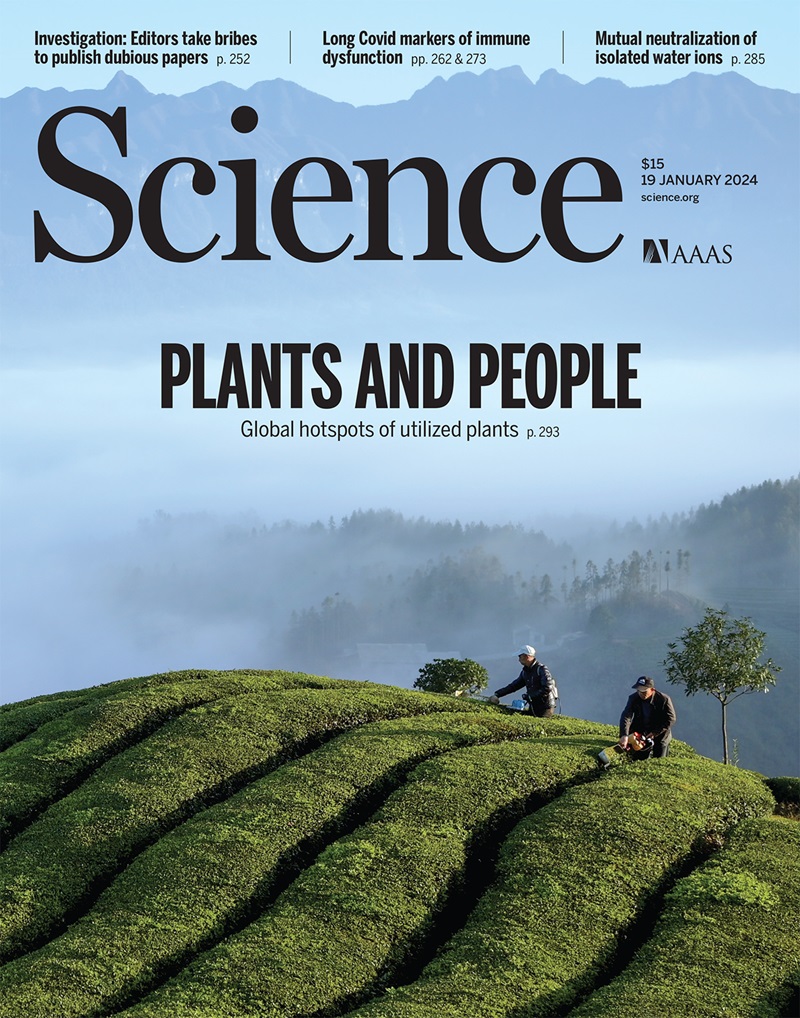The mechanics behind the beauty of roses
IF 44.7
1区 综合性期刊
Q1 MULTIDISCIPLINARY SCIENCES
Science
Pub Date : 2025-05-01
引用次数: 0
Abstract
Nature’s artistry in shaping living forms often arises from the delicate interplay between growth and geometry. From the undulating margins of lotus leaves to rippled edges of lily petals, intricate three-dimensional configurations emerge as biological tissues grow unevenly from the initial two-dimensional geometry. For decades, Gauss’s Theorema Egregium—a geometrical theory that links intrinsic curvature of a surface to measurements of its distance and angle—has served as the cornerstone for understanding such morphogenesis (1, 2). On page 520 of this issue, Zhang et al. (3) report a distinct mechanism underlying the formation of sharp cusps of rose petals that deviates from this classical incompatibility. This discovery reframes understanding of how geometrical constraints sculpt biological forms and opens new avenues for engineering shape-shifting materials.
玫瑰美丽背后的机械原理
大自然塑造生命形式的艺术往往源于生长与几何之间微妙的相互作用。从荷叶的起伏边缘到百合花瓣的波纹边缘,复杂的三维结构随着生物组织从最初的二维几何形状不均匀地生长而出现。几十年来,高斯定理(Gauss 's theorem egregim)——一种将表面的固有曲率与其距离和角度的测量联系起来的几何理论——一直是理解这种形态发生的基石(1,2)。在这期杂志的第520页,Zhang等人(3)报道了玫瑰花瓣尖尖形成的独特机制,偏离了这种经典的不相容。这一发现重新定义了几何约束如何塑造生物形态的理解,并为工程变形材料开辟了新的途径。
本文章由计算机程序翻译,如有差异,请以英文原文为准。
求助全文
约1分钟内获得全文
求助全文
来源期刊

Science
综合性期刊-综合性期刊
CiteScore
61.10
自引率
0.90%
发文量
0
审稿时长
2.1 months
期刊介绍:
Science is a leading outlet for scientific news, commentary, and cutting-edge research. Through its print and online incarnations, Science reaches an estimated worldwide readership of more than one million. Science’s authorship is global too, and its articles consistently rank among the world's most cited research.
Science serves as a forum for discussion of important issues related to the advancement of science by publishing material on which a consensus has been reached as well as including the presentation of minority or conflicting points of view. Accordingly, all articles published in Science—including editorials, news and comment, and book reviews—are signed and reflect the individual views of the authors and not official points of view adopted by AAAS or the institutions with which the authors are affiliated.
Science seeks to publish those papers that are most influential in their fields or across fields and that will significantly advance scientific understanding. Selected papers should present novel and broadly important data, syntheses, or concepts. They should merit recognition by the wider scientific community and general public provided by publication in Science, beyond that provided by specialty journals. Science welcomes submissions from all fields of science and from any source. The editors are committed to the prompt evaluation and publication of submitted papers while upholding high standards that support reproducibility of published research. Science is published weekly; selected papers are published online ahead of print.
 求助内容:
求助内容: 应助结果提醒方式:
应助结果提醒方式:


